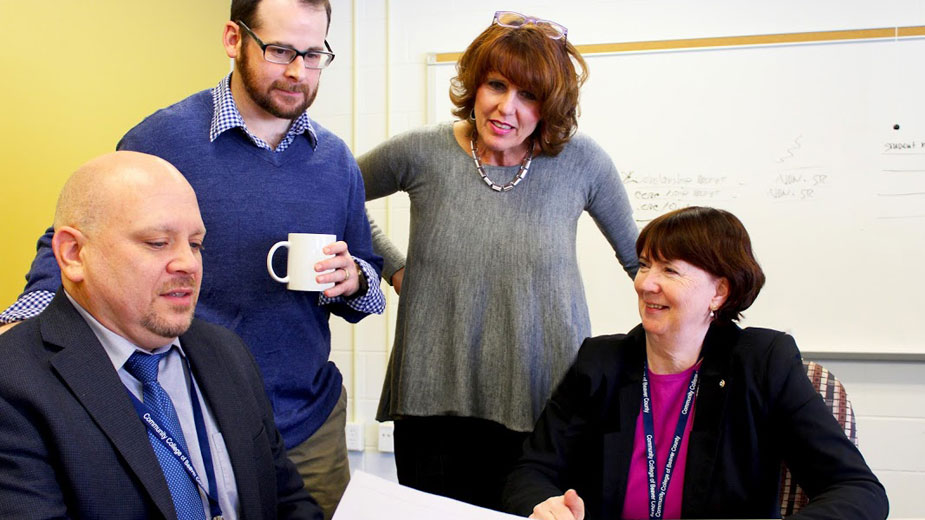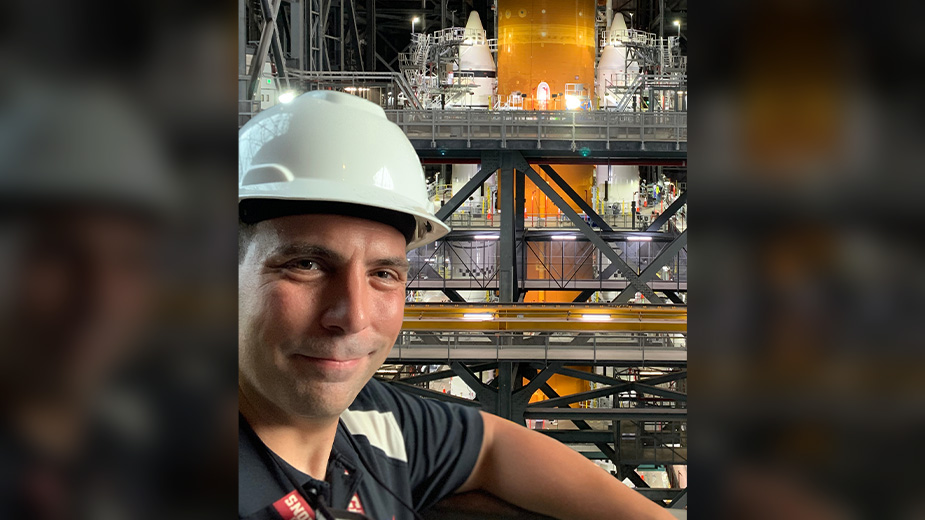TEAM Prepares Energy, Manufacturing Workforce
YOUNGSTOWN, Ohio – A group of community colleges and other organizations in Ohio, Pennsylvania and West Virginia have teamed to build up the regional workforce in energy and advanced manufacturing – and they’re not letting competition get in their way.
The Tristate Energy and Advanced Manufacturing Consortium, or TEAM, is composed of 10 community colleges throughout a three state, 27-county footprint, including Eastern Gateway Community College, as well as economic development organizations, businesses, nonprofits, philanthropic organizations and workforce development boards. The initiative is led by the Community College of Beaver County in Monaca, Pa.
“The goal of the partnership is to ensure that the region has an adequate supply of skilled workers,” says TEAM director Elizabeth McIntyre.
TEAM stakeholders get together three times annually to align their initiatives, McIntyre says, and each group of stakeholders has its own role to play. Educational institutions are tasked with creating a flexible training model for the future workforce, so if a student starts at one institution, he can follow up and finish at another.
A stackable-credentials model clearly defines a career pathway from certifications to post-secondary degrees, up to and including a master’s degree, says Roger Davis, president of Community College of Beaver County.
As part of the Beaver County Energy and Advanced Manufacturing Partnership, the college works closely with PA CareerLink Beaver County and county school districts to promote such opportunities to middle school students. In the fall, it organized as many as 1,000 students to meet with area manufacturers for hands-on activities and attend a panel discussion of young professionals.
“It’s very clear for people what those pathways look like,” Davis says. “It’s also a clear instrument for career engagement.”
The stackable-credentials model allowed Pierpont Community and Technical College in Fairmont, W.Va, to partner with the Robert C. Byrd Institute Advanced Manufacturing Technology Center and Marshall University last June to develop a program for students interested in becoming entry-level machinists, says its president, Johnny Moore.
While taking general education and some technical courses at Pierpont to earn an associate in applied science, students get hands-on technical instruction at the Byrd Institute. From there, they can transfer to Marshall to earn a baccalaureate to attain management and other leadership positions, Moore says.
The construction of the Royal Dutch Shell ethane cracker plant near Monaca, Pa., was the impetus for creating the consortium, says Davis, who is co-chairman of TEAM’s board with Chevron Corp. An initial $150,000 grant from the Claude Worthington Benedum Foundation got the group going and was followed by additional funding dollars from Benedum – a total of $248,300 over one year – $250,000 over one year from Chevron, $587,950 over three years from the Appalachian Regional Commission and $597,894 of in-kind matches from 10 educational partners over three years.

“Working to fill the STEM workforce gap is a big job, one that no one company, college or organization can do on its own,” Davis says. “These commitments from Appalachian Regional Commission, Benedum and Chevron allow CCBC and our partners to build on the successes we had in our first year. It also shows that when all of us work toward a bigger, common goal, we can move the needle and make a difference in our regions.”
Making a difference requires setting aside any notion of competition. To meet the needs of the regional student populations, community colleges signed a memorandum of understanding to share curriculum and equipment across state lines, says Pierpont’s Moore,
While Moore recognizes it requires a shift in mindset among colleges, it’s necessary to address students’ needs.
“Too often, too many of our students leave our institutions without the skills to work these jobs,” Moore says. “All of us can’t be experts in all areas. There is strength in numbers.”
Nationally, 6 million jobs go unfilled and in West Virginia, more than 30,000 jobs currently face a reskilling challenge, Moore says. Building the workforce to fill those jobs must be done “collectively and strategically” throughout the region, he says, and it would be overwhelming and unproductive if any one part of the region tried to tackle the issue on its own.
“Everybody can get a slice of the pie. But it depends on how we look at it,” he says.
A curriculum established about two years ago with Murray Energy Corp. of St. Clairsville, Ohio, allows students to enroll at Pierpont and work part time at Murray, creating a pipeline to employment, he says. Another partnership with FirstEnergy allows students to spend half of their week in a Pierpont classroom and the rest of the time at the FirstEnergy building in Pierpont.
The pathway leads to “immediate employment” with FirstEnergy throughout the state of West Virginia, Moore says, graduating 20 to 25 students annually over the last few years.
“We have more people applying to the program than we have seats,” Moore says. “Students know it’s a pathway, that if they get in and complete it, there’s a job waiting for them.”
The consortium and its stakeholders have helped to create a sense of community as a region, says TEAM’s McIntyre. “Working together is going to get us where we need to go,” and having a forum such as TEAM is critical to making that happen, she says.
“We’re all responding to the same dramatic need and employers do not see those county boundaries or state boundaries,” McIntyre says. “There’s a lot of common ground when we come together around these common goals.”
So far, the efforts seem to be working, she says. As part of the grant from the Appalachian Regional Commission, the group must connect 2,400 students to jobs in the region, “and we’re on track for where we expect to be,” she notes.
Filling those jobs is vital to economic development, particularly in the petrochemical market. In October, Mousa Kassis, director of the Ohio Small Business Development Center Export Assistance Network on the campus of Youngstown State University, was the keynote of the TEAM conference at CCBC. The export network is coordinating its efforts with TEAM to meet the needs of the petrochemical industry cluster that’s developing in the region, Kassis says.
Though in its early stages, Kassis expects to have an action plan in the coming months, he says. The goal is to help position the United States as the No. 1 exporter for ethylene products globally. Currently, the U.S. commands about 10% of the market, second to Saudi Arabia, which has 15%.
“It’s a great effort and it is a great idea. What they are doing is trying to bring to the market the skills needed and also meet the demand from companies in a timely manner,” Kassis says. “That means they could fill up the gap and meet the demand of companies by focusing on the training that is requested from the industry.”
Adds TEAM’s McIntyre, “Ohio plays a very active and key role in this tri-state effort. They work really well across the border.”
Over the next decade, data show there will be 100,000 job openings in energy and advanced manufacturing, she notes. With more than 60,000 students enrolled at community colleges in TEAM’s footprint, it puts them in a good position to fill those jobs, she says.
“We’re building the capacity of our local partners,” she says. “When you look at the infrastructure that’s set up, this is doable. We just need to raise awareness to people what their options are.”
Pictured: Elizabeth McIntyre (right) works with CCBC’s dean of workforce development and continuing education, John Goberish, career coach Hugh Gallagher and program manager for continuing education, Diane Loverich, to align partnerships and pathways for the TEAM Consortium.
Copyright 2024 The Business Journal, Youngstown, Ohio.



